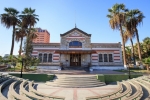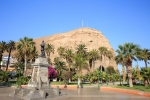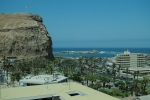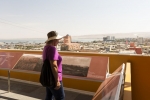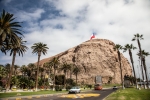Information about Arica
The northernmost city of Chile, located in the
Valle de Azapa more than two thousand kilometers from
Santiago (capital) and only 19 kilometers from the border with Peru. Its climate is desert coastal, with an average temperature of 19 ° C throughout the year, so it is called ?the city of eternal spring.
Arica is the port and capital of the Arica y Parinacota Region, which contains various archaeological tourist attractions (Cerro Sombrero, mummies, Llugo geoglifos, various pukará, etc.), various protected natural areas such as the
Lauca National Park , where is the
Chungará Lake (with 4,570 m.s.n.m) surrounded by several snow-capped mountains such as the Parinacota Volcano (6,342 m.s.).
In the city it is possible to see varied attractions such as the architectural works of Eiffel, the Arica railway La Paz, the island of Alacrán, the historical
Morro de Arica and Chinchorro beach, among others
The first inhabitants of this region were belonging to the Chinchorro culture, which emphasizes the process of mummification.
In 1546 it was discovered the silver mine of Potosi in Upper Peru, which would cause that 25 years later, in 1570, founded the city of Arica. At first, their importance lies in meeting as a port shipping ore from the mine and supply to the inhabitants of this. The transition between the two was done through huge mule caravans, carrying both the silver, and all kinds of products for the provision of household goods.
The creation of the Viceroyalty of La Plata, about 200 years later, Arica lost its importance, since it included the territory in which the mine was located, therefore, all traffic and transport that was done, was diverted to the city of Buenos Aires. With the establishment of the Republic of Peru in this area during the mid-nineteenth century, the city regained some of its luster.
